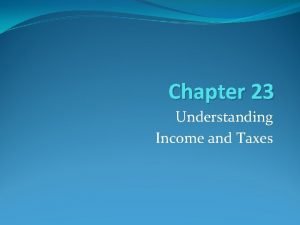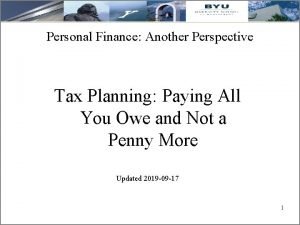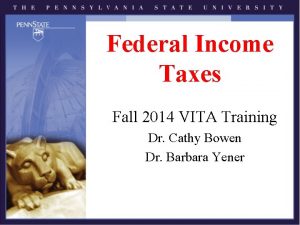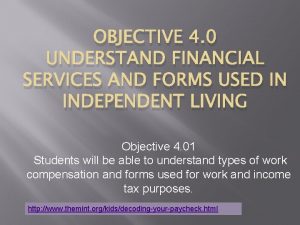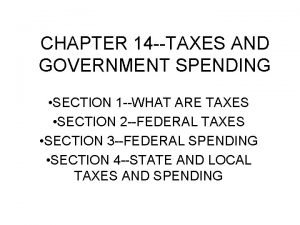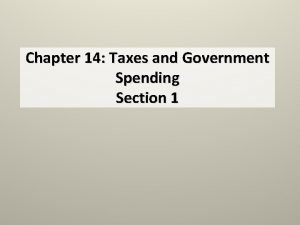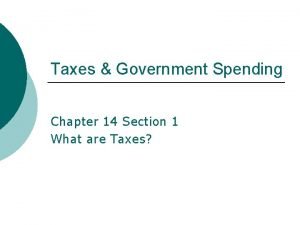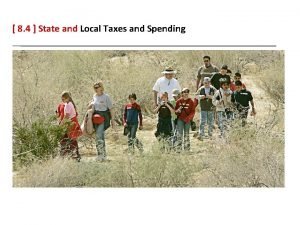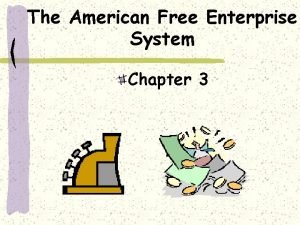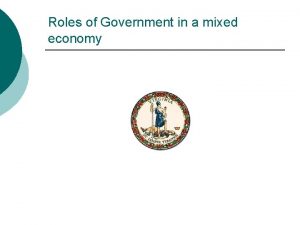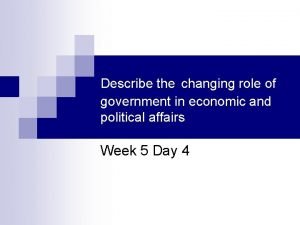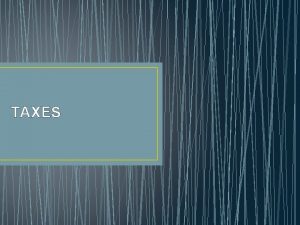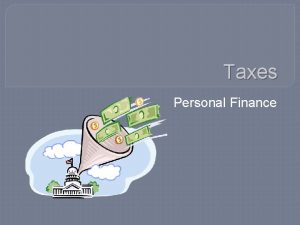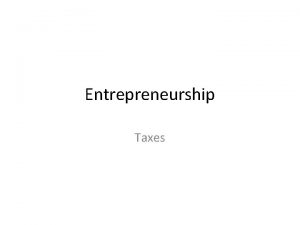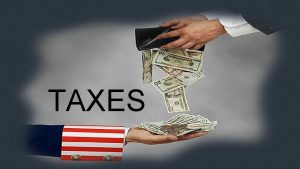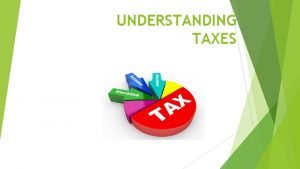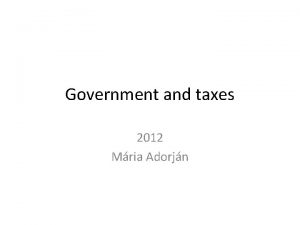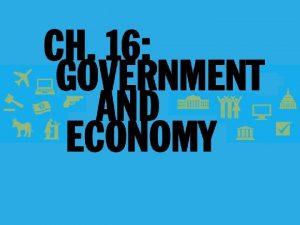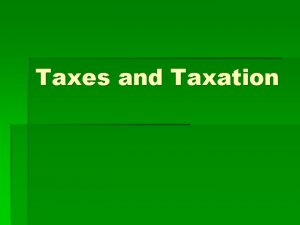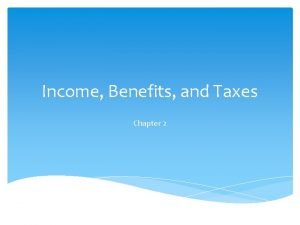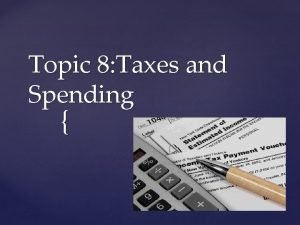GOVERNMENT AND THE ECONOMY UNDERSTANDING TAXES AND GOVERNMENT












- Slides: 12

GOVERNMENT AND THE ECONOMY UNDERSTANDING TAXES AND GOVERNMENT SPENDING

CLASSIFICATIONS OF TAXES Progressive – imposes a higher percentage rate of taxation on persons with higher incomes, and usually use a marginal tax rate. Regressive – imposes a higher percentage rate of taxation on low incomes than on high incomes. Proportional – imposes the same percentage rate of taxation on everyone, regardless of income.

TYPES OF TAXES Personal Income Tax (Federal and State) Sales and Excise Taxes Property Tax Social Security Tax (FICA) Estate and Gift Taxes are the main source of revenue for the federal, state and local government. See www. irs. gov for tax forms and information.

GOVERNMENT SPENDING The federal government spends money on goods and services and transfer payments. The federal budget includes mandatory spending and discretionary spending. Most of mandatory spending is “entitlement” spending. The OMB sends the president’s budget to Congress, who may approve, modify or disapprove of the budget. The bill goes first to the House of Representatives and then the Senate. Congress can pass their own budget bill which the president may sign or veto.

GOVERNMENT SPENDING CATEGORIES • https: //www. whitehouse. gov/interactive-budget

DEFICIT V. DEBT • The deficit is the total spending each year that exceeds revenues. • A surplus occurs when revenues exceed expenditures. • The federal debt is the total amount borrowed from investors to finance the government’s deficit spending.

FISCAL POLICY • Fiscal policy is the government’s attempt to stabilize the economy through taxing and government spending. * • A key component of fiscal policy is the role of automatic stabilizers in the economy. Three important stabilizers are the progressive income tax, unemployment insurance and federal entitlement programs. • The multiplier affects fiscal policy, as well as monetary policy. • *Monetary Policy is implemented by the Federal Reserve System to stabilize the economy through the banking system.

DEMAND SIDE ECONOMICS • Keynesian economics, named after economist John Maynard Keynes, believes economic growth can occur by stimulating aggregate demand. Demand side economics was popular through the 1970’s.

SUPPLY SIDE ECONOMICS Supply-side economics are policies designed to stimulate output and lower unemployment by increasing production rather than demand. Supply-siders also believe in a smaller role for government and lowering federal taxes. Milton Friedman, an advisor to President Reagan, won a Noble Prize in economics.

EXPANSIONARY FISCAL POLICY • Lower Taxes and/or • Increase Government Spending

CONTRACTIONARY FISCAL POLICY • Raise taxes and/or • Cut government spending

and counting…. www. usdebtclock. org
 Chapter 23 understanding income and taxes
Chapter 23 understanding income and taxes Understanding taxes
Understanding taxes Understanding taxes
Understanding taxes Payroll card
Payroll card Chapter 14: taxes and government spending section 1
Chapter 14: taxes and government spending section 1 Chapter 14 taxes and government spending
Chapter 14 taxes and government spending Chapter 14 taxes and government spending
Chapter 14 taxes and government spending Residential status meaning
Residential status meaning Athens vs sparta differences
Athens vs sparta differences State and local taxes and spending
State and local taxes and spending How are conflicts among economic goals resolved
How are conflicts among economic goals resolved What is the role of the government in a mixed economy
What is the role of the government in a mixed economy Changing role of government in the economy
Changing role of government in the economy
